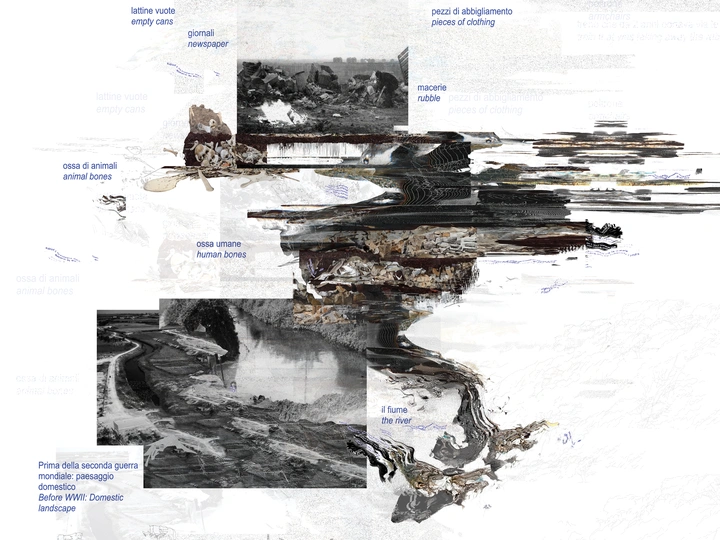Ascensione al Monte Stella

Milica Božić is an architect and researcher originally from Belgrade, Serbia. She is pursuing PhD studies as a Marie Skłodowska-Curie Fellow at Politecnico di Milano and RMIT University through the double-degree REDI program. Her research focuses on architectural exhibitions that explore and create heritage, combining historical and practice-based methodologies. Before starting the PhD, Milica was a junior researcher at the Institute for Philosophy and Social Theory in Belgrade and a teaching associate at the Faculty of Architecture, University of Belgrade. She is currently developing her curatorial practice by creating architectural exhibitions, such as the Ascensione al Monte Stella exhibition for 2024 Milan Arch Week. She actively participates in the Practice Research Symposium, held in Barcelona, Melbourne, Ho Chi Minh and New York.
This conceptual pavilion tells the story of the only mountain in Milan - Monte Stella.
It explores the layers of the Monte Stella memorial, designed by Piero Bottoni and located in the heritage-listed QT8 neighbourhood. Taking inspiration from Bottoni's text Ascensione al Monte Stella and Alexander von Humboldt's drawings, the exhibition explores the historical and architectural heritage of Monte Stella. It occurs in Monte Stella, at Il Giardino dei Giusti, in the amphitheatre Ulianova Radice.
Centred around Monte Stella's vertical section, the installation serves as a transhistorical experiment, exposing the layers that constitute the memorial, such as the rubble from World War II, human and animal bones, a submerged river, the grass, the trees, or the people engaged in contemporary activities such as cycling and walking dogs.
The installation will be positioned at the amphitheatre centre, functioning simultaneously as an interactive collage embodying the hill's multifaceted layers. It comprises individual sections that, when viewed from one angle, resemble a drawing of the hill’s section. When observed from another, they split apart to enable visitors to step into the section physically. The installation will be a base for collages representing the various layers of the memorial and will be made from archival materials, text, and free-hand drawings. Visitors will contribute to this collage by attaching post-it notes explaining how the exhibition made them feel.
The exhibition will take place from May 24th until May 26th, 2024, as part of the Milan Arch Week, organised by Triennale Milano. It is the first one of its kind to recognise the hidden heritage of Monte Stella and to organise an exhibition on site to expose this unknown story of the land the people of Milan are standing on.
This conceptual pavilion will disappear and re-appear in different constellations on each of the three days, questioning and shifting the linear notion of time.